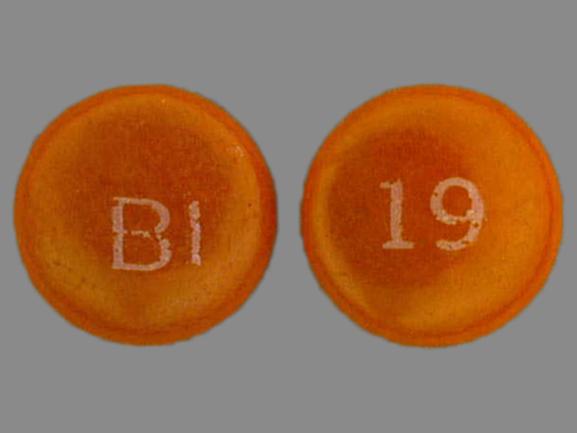Persantine Disease Interactions
There are 4 disease interactions with Persantine (dipyridamole).
Dipyridamole (applies to Persantine) bronchospasm
Major Potential Hazard, Low plausibility. Applicable conditions: Asthma, Chronic Obstructive Pulmonary Disease
Dipyridamole is a phosphodiesterase inhibitor and can exacerbate bronchospasm, particularly in patients with reactive airway disease and/or chronic obstructive pulmonary disease (COPD). Therapy with dipyridamole is contraindicated in patients with active wheezing and should be administered cautiously in patients with asthma or COPD.
References
- Lette J, Cerino M, Laverdiere M, Tremblay J, Prenovault J "Severe bronchospasm followed by respiratory arrest during thallium- dipyridamole imaging." Chest 95 (1989): 1345-7
- Eagle KA, Boucher CA "Intravenous dipyridamole infusion causes severe bronchospasm in asthmatic patients." Chest 95 (1989): 258-9
- "Product Information. Persantine (dipyridamole)." Boehringer-Ingelheim PROD (2002):
Dipyridamole (applies to Persantine) conduction abnormalities
Moderate Potential Hazard, Moderate plausibility. Applicable conditions: Arrhythmias
Serious adverse reactions associated with the administration of intravenous dipyridamole have included cardiac death, fatal and non- fatal myocardial infarction, ventricular fibrillation, symptomatic ventricular tachycardia, stroke, transient cerebral ischemia, seizures, anaphylactoid reaction and bronchospasm. There have been reported cases of asystole, sinus node arrest, sinus node depression and conduction block. Patients with abnormalities of cardiac impulse formation/conduction or severe coronary artery disease may be at increased risk for these events. Caution is recommended.
References
- "Product Information. Persantine (dipyridamole)." Boehringer-Ingelheim PROD (2002):
Dipyridamole (applies to Persantine) hypotension
Moderate Potential Hazard, High plausibility.
Dipyridamole can cause peripheral vasodilation. Therapy with dipyridamole should be administered cautiously in patients with hypotension.
References
- Castello R, Hidalgo R "Dipyridamole-induced myocardial ischemia ." JAMA 259 (1988): 1179
- "Product Information. Persantine (dipyridamole)." Boehringer-Ingelheim PROD (2002):
- Roach PJ, Magee MA, Freedman SB "Asystole and bradycardia during dipyridamole stress testing in patients receiving beta blockers." Int J Cardiol 42 (1993): 92-4
- Mauro RL, Sabella FP, Enia F "Sinus arrest associated with dipyridamole infusion." Chest 105 (1994): 604-5
- Lo Mauro R, Sabella FP, Enia F "Sinus arrest associated with dipyridamole infusion." Chest 106 (1994): 984
Dipyridamole (applies to Persantine) myasthenia gravis
Moderate Potential Hazard, Low plausibility.
Myasthenia gravis patients receiving therapy with cholinesterase inhibitors may experience worsening of their disease in the presence of dipyridamole. Caution should be exercised with these patients.
References
- "Product Information. Persantine (dipyridamole)." Boehringer-Ingelheim PROD (2002):
Persantine drug interactions
There are 156 drug interactions with Persantine (dipyridamole).
Persantine alcohol/food interactions
There are 2 alcohol/food interactions with Persantine (dipyridamole).
More about Persantine (dipyridamole)
- Persantine consumer information
- Check interactions
- Compare alternatives
- Drug images
- Side effects
- Dosage information
- During pregnancy
- Generic availability
- Drug class: cardiac stressing agents
- Breastfeeding
Related treatment guides
Drug Interaction Classification
| Highly clinically significant. Avoid combinations; the risk of the interaction outweighs the benefit. | |
| Moderately clinically significant. Usually avoid combinations; use it only under special circumstances. | |
| Minimally clinically significant. Minimize risk; assess risk and consider an alternative drug, take steps to circumvent the interaction risk and/or institute a monitoring plan. | |
| No interaction information available. |
Further information
Always consult your healthcare provider to ensure the information displayed on this page applies to your personal circumstances.


